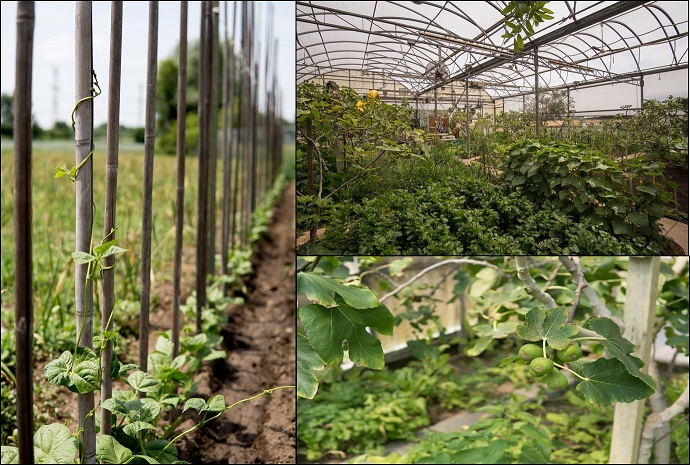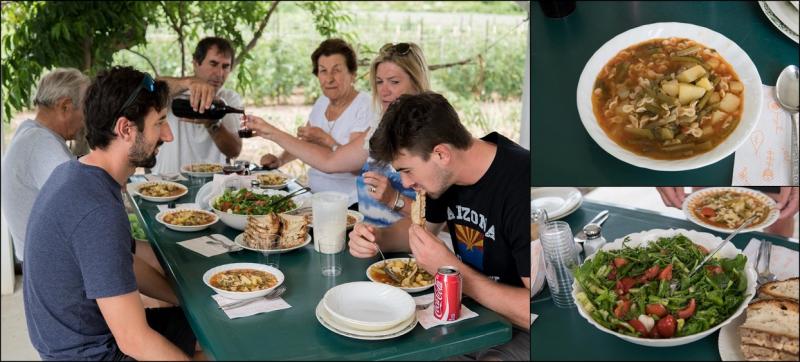Plants, Food, and Old World Heritage
Plants, Food, and Old World Heritage
By Kali Wade, SoE social media coorindator . Photos by Christopher Capobianco.
At 87 years old, Antonio Capobianco (Nonno) buzzes around his modern, modest greenhouse every day, tending his plants on what most would call a farm. Despite being one of many farms around the outskirts of Toronto, Nonno’s farm and greenhouse are very unlike others in the surrounding area. Raised in the rural mountains of Puglia, Italy, Nonno has employed techniques that beckon back to the old country; sustainable practices that keep his farm and greenhouse operating in productive, harmonious ways. His compost feeds his soil, which in turn feeds himself, his wife (Nonna, of course), children and grandchildren, chickens, rabbits, dogs, and donkey, with nothing going to waste and little to want for. At the heart of Nonnos’ passion and farm is the greenhouse.

Constructed of metal and glass and approximately 1200 feet2, Nonno manages 6 plots of rich soil in the bright and airy space of the greenhouse. Sunlit green leaves, a soft light, chirping birds, and Nonno’s happy face welcome those that enter here. One can quickly see the variety of plants growing there, occupying different levels of vertical space. Trees, medium sized, bushy plants, and low-growing foliage all live in the greenhouse, pruned and planted according to the season. Placed centre stage in each plot is a fig or olive tree, most of which travelled across the ocean years before importation laws were so strict. The trees in his greenhouse were obtained from friends and Nonno can delightfully recall their origin lineages to Italy, Spain, or Portugal. Under and hugging the trees, other plants are meticulously seeded in straight lines, with the help of a string that Nonno insists on using for each session of planting. Depending on the time of year, one can find finocchio (fennel), cicoria (dandelion), rapini (broccoli rabe), numerous kinds of pomodoros (tomatoes), limones (lemon), and a variety of green stuff (leafy greens such as spinach, swiss chard, and arugula). Outside in the soil surrounding his house are strings of grapes, peas, beans, chiles, limes, oranges, cauliflowers, cabbages, and the list goes on and on. When I’ve asked Nonno how he keeps track of seeding, harvesting, and pruning, he smiles with bright eyes and taps his temple with a gnarled pointer finger. As he has been doing this for years, he understands the cycle of plants and has saved the seeds of those plants he likes, and his preferred purposes for each. His seeds are saved in glass jars, labeled in Italian scribbles, and blended to bring out the characteristics he liked best from previous seasons.

Nonno’s greenhouse is a testament to a man who delights in nature, nurturing others, and maintaining a healthy, wholesome lifestyle. Nonno’s heritage is at work every day, in the greenhouse, on his table, and on the tables of those he loves. Through his good works and passion for good food, he ensures the consumption of traditional diets for not only himself and wife, but his children, grandchildren, and the appreciation will live on. Food and plants behave like translators in Nonno’s life, and like so many others, connect generations not only through time, but across national borders and oceans. Antonio Capobianco’s youthful enthusiasm, quick gifting, and true appreciation for home-grown food are things we could all think about when we sit down to our next meal.

